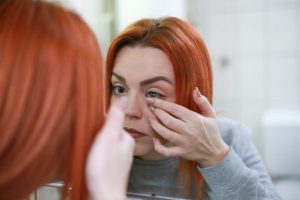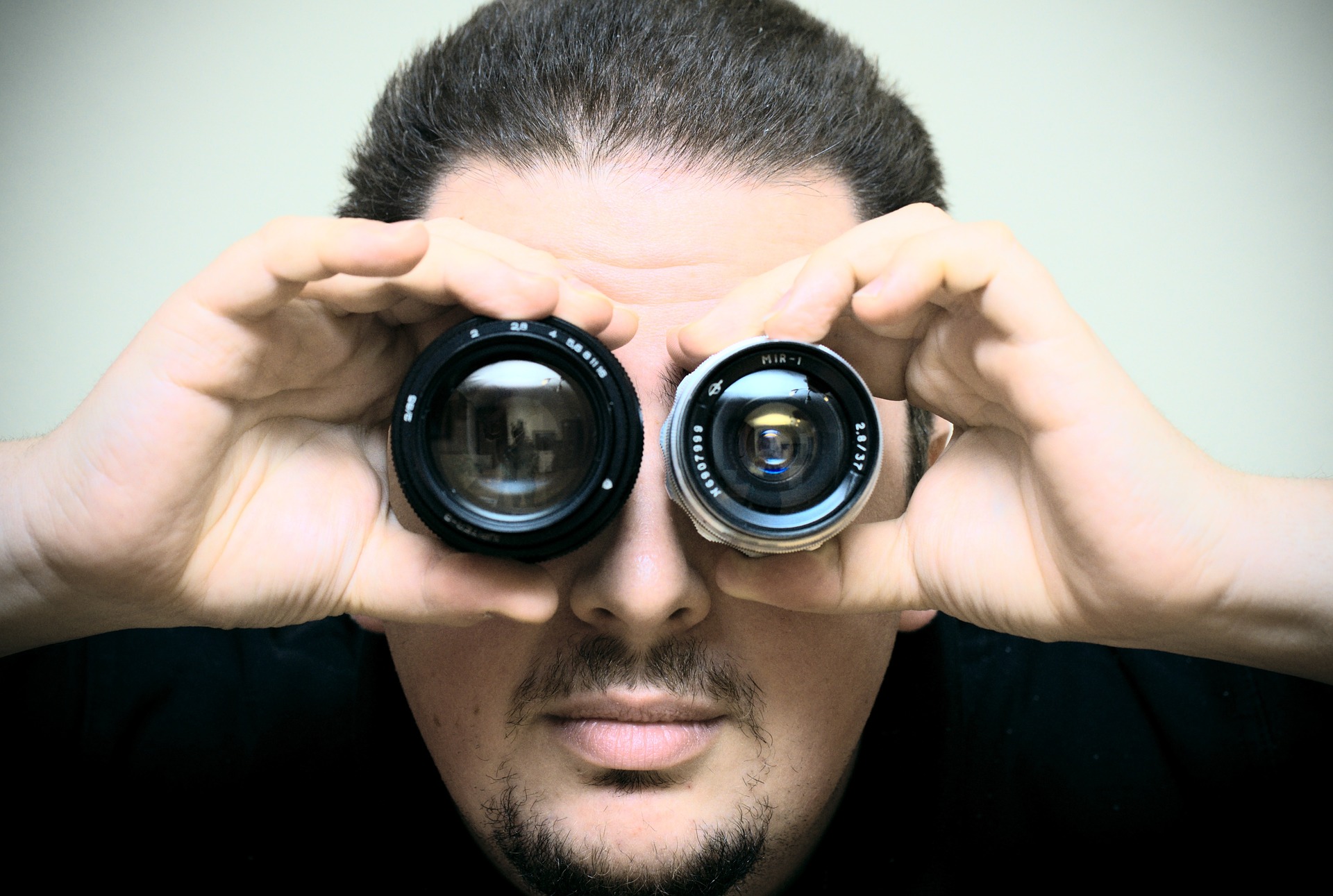Do you need a more practical solution than glasses for your sight impairment ? Contact lenses work on the same principle as diopter spectacle lenses, and although they cannot completely replaced them, contact lenses are often absolutely irreplaceable for their wearers.
It was Lenardo da Vinci who had the idea of how to complement the optical system of the eye, almost 500 years ago. The first prototype of lenses was made by Zeiss, which created hard lenses with a combination of glass and plastic materials. The first soft contact lenses of academic Otto Wichterle, who invented soft gel in 1953, became groundbreaking. It consisted of deposits made from protein and fat, which led the manufacturer to produce lenses for the planned daily or two-week exchange (known as disposable). The most commonly used materials for the production of soft contact lenses are hydrogel, which contains water – the lenses are soft thanks to it, but harder to leak the oxygen. Silicone-hydrogel lenses are produced by combining hydrogel and silicone – these have better oxygen permeability even at lower water content.
 Soft lenses adapt to the cornea, so you need to follow two steps when choosing the right ones: shape and application. Since contact lenses have several parameters, these must be measured exactly on the eye and tested for at least 2-3 weeks. If both the optician and the patient are satisfied after a follow-up, further checks are only at half-yearly intervals. All necessary information about the wearing, application and value of contact lenses (diopter, diameter and curvature) is communicated to the patient after an eye examination in the eye clinic.
Soft lenses adapt to the cornea, so you need to follow two steps when choosing the right ones: shape and application. Since contact lenses have several parameters, these must be measured exactly on the eye and tested for at least 2-3 weeks. If both the optician and the patient are satisfied after a follow-up, further checks are only at half-yearly intervals. All necessary information about the wearing, application and value of contact lenses (diopter, diameter and curvature) is communicated to the patient after an eye examination in the eye clinic.
What is the difference between single-use contact lenses and reusable contact lenses? Disposable contact lenses can only be used once, thus they are especially suitable for contact lenses first-time-wearers. You do not need a solution or a case and you will find out if they suit you. Oxygen permeability is higher than for multi-day lenses. You can apply reusable contact lenses repeatedly, but you must also monitor the maximum application time.
The eye problems are becoming more common in young children. However, when is it appropriate for contact lenses to be worn by even young patients? There are diagnoses in which contact lenses must also be worn by newborns, such as after inborn cataract operations. Also, in case of severe bluntness, the use of a contact lenses is also necessary for children. Children’s eye doctors take into account the age and with it the ability to apply the lens when recommending the wearing of contact lenses. A responsible child from the age of 12 could already cope with the application, while at the same time taking care of the necessary adherence to hygiene.
What about people who have astigmatism (cylinder)? In case of this refractive error (adaptability of the eye lens) it is possible to wear contact lenses. Before their first application, an examination by an optician is important to take place, as well as a training about their correct application in the eye clinic or in the optics.
The eye contact occurs when applying contact lenses, therefore it is natural to feel a fear of an eye infection. It is necessary to follow strict hygiene measures when applying the contact lenses and the patient should learn these at the first training. Poor handling of contact lenses and non-compliance with hygiene instructions give room for serious eye infections that can endanger your vision.
When can the contact lenses actually be worn? Can we swim or shower with them, for example? Good news – contact lenses are suitable for everyday wearing and, of course, sports. Contact with water (e.g. swimming or showering) is not recommended, the most dangerous is mainly bathing with lenses in stagnant waters, where bacteria, viruses, fungi and acanthamoeba survive. It is the acanthamoeba that can cause severe inflammation of the cornea, which can end up in blindness.
Contact lenses need to be looked after! When applying and wearing them, it is important to adhere to hygiene habits such as:
- Always wash your hands thoroughly before applying lenses.
- Use the correct solutions for monthly lenses.
- Replace the case regularly at least once a month.
- Do not use tap water to clean contact lenses and cases.
There are also cases when wearing the contact lenses is inappropriate. It is undesirable in people with a severe allergy, which is recognized as burning, tearing and sharp-hurting eyes, nor in patients with conjunctive and corneal inflammation, or damage to the corneal epithelium. Caution should be taken when wearing contact lenses in patients with dry eye syndrome.



